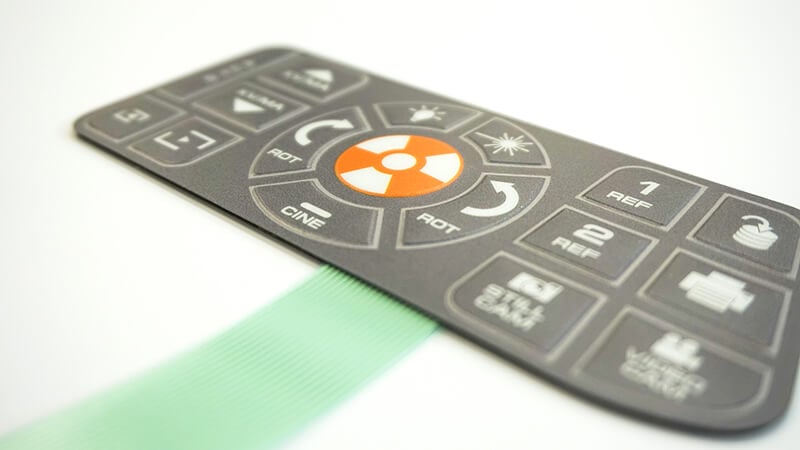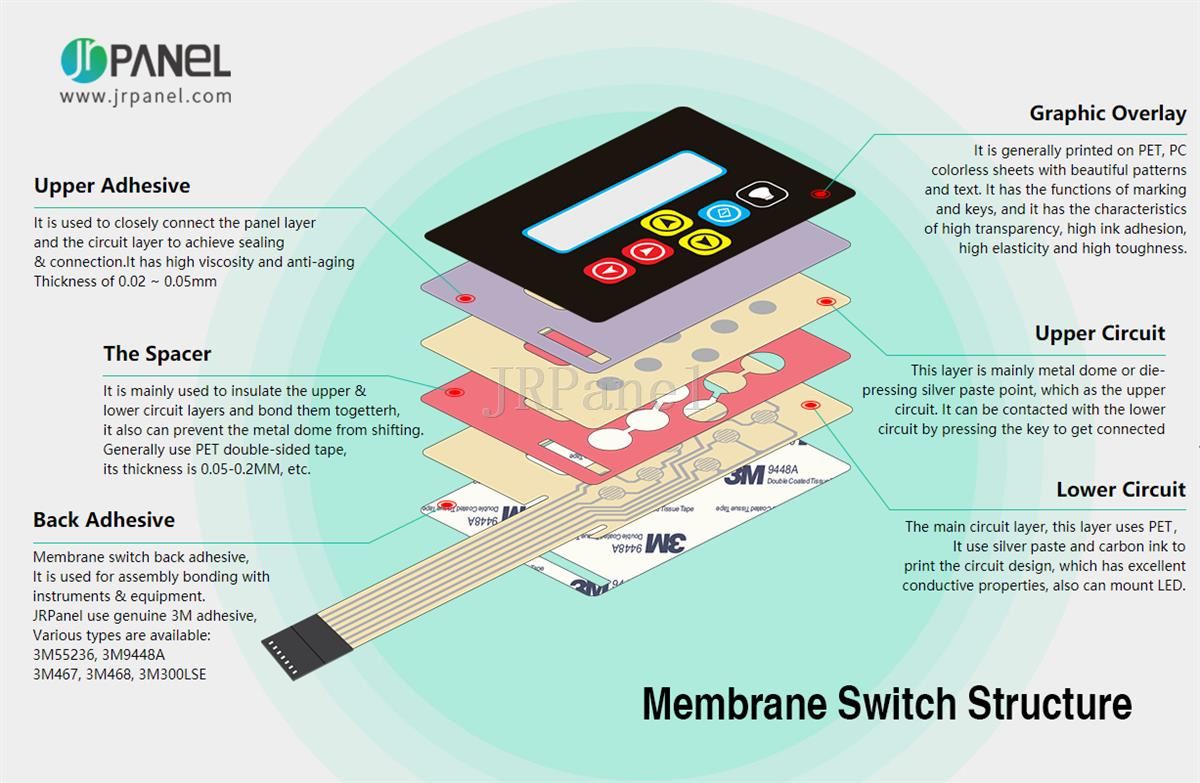Leading Benefits of Incorporating a Membrane Switch Into Your Digital Equipment
Leading Benefits of Incorporating a Membrane Switch Into Your Digital Equipment
Blog Article
Comprehending the Functionality of Membrane Layer Changes for Individual Interface Instruments
The performance of membrane layer switches over stands for a significant advancement in customer interface design, incorporating performance with visual convenience. As industries progressively focus on customer experience, understanding the nuances of membrane layer switch innovation ends up being necessary.
What Are Membrane Switches?
Membrane layer switches are ingenious interface devices that assist in user communication with digital devices. These flexible components include numerous layers, consisting of a graphic overlay, spacer, and a printed circuit layer. The design permits a smooth integration into different digital tools, boosting both the aesthetic and useful aspects of interface.
Membrane buttons are commonly used in a vast array of applications, from family home appliances to commercial machinery and medical devices. Their construction typically features a thin account, making them a suitable option for small layouts. The responsive responses given by these switches can be crafted to satisfy particular customer preferences, making certain effective interaction between the customer and the gadget.
Durability is another considerable benefit of membrane buttons, as they are resistant to dust, moisture, and chemicals, which enhances their life expectancy sought after atmospheres. Additionally, these buttons can be personalized in terms of form, size, and graphic layout, permitting branding and user-specific features. Overall, membrane layer switches over stand for a functional service for enhancing individual experience in digital devices, incorporating functionality with aesthetic appeal in a reliable way.
Exactly How Membrane Switches Over Work
Operating on an uncomplicated concept, membrane layer switches utilize a split building to register individual input effectively. Each button contains numerous layers, consisting of a published circuit layer, a spacer layer, and a leading visuals layer, which are made to function together seamlessly. When a user presses the leading layer, it compresses the spacer layer, bringing the conductive components of the circuit layer into call with each various other.
This call creates a closed circuit, signifying the tool to carry out a specific feature. The style permits numerous configurations, consisting of responsive comments, which can boost the individual experience by offering a physical experience upon activation. The products utilized in membrane switches often consist of flexible substrates, such as polyester or polycarbonate, which guarantee longevity and strength against damage.

Trick Advantages of Membrane Layer Switches

One more significant benefit is their density. Membrane buttons are thin and lightweight, which makes it possible for makers to save room in their gadgets without sacrificing capability. This function is particularly valuable in applications where weight and quantity are vital considerations.
In addition, membrane buttons are resistant to dirt, moisture, and chemicals, enhancing their longevity. This durability extends their life expectancy and reduces the requirement for frequent substitutes, resulting in price savings gradually.
Additionally, the tactile responses supplied by membrane layer switches can be maximized to enhance individual interaction. They can include attributes such as raised switches or distinct clicks, improving functionality and customer experience.
Applications Across Industries
Customer see this website user interface devices using membrane layer switches are common in a vast range of markets, showcasing their flexibility and functionality. Membrane Switch. In the medical field, membrane buttons are integral to tools such as analysis devices and person monitoring systems, where their sturdiness and simplicity of cleansing are vital for keeping hygiene standards. In a similar way, in the auto industry, these switches are utilized in control panel controls and infomercial systems, providing try this website a sleek and contemporary interface for users.
Moreover, the consumer electronics sector take advantage of membrane buttons in devices and portable tools, where small design and easy to use interfaces enhance user experience. Industrial applications also leverage membrane switches over for control board in equipment and automation systems, emphasizing their robustness and resistance to harsh environments.
In the aerospace and protection markets, membrane buttons are made use of in cabin controls and devices, where dependability and performance under extreme problems are critical. Additionally, the gaming sector progressively integrates membrane buttons in controllers and game devices, adding to an engaging customer experience. Generally, the versatility of membrane layer switches over allows their extensive use throughout various industries, highlighting their importance in modern-day interface style.
Future Fads in Membrane Change Technology

Additionally, using innovative products, such as polycarbonate and polyester films, is expected to increase, giving enhanced longevity and resistance to environmental stressors. These materials add to the total longevity of membrane switches, making them appropriate for harsher commercial applications.
In addition, the incorporation of smart innovation, consisting of IoT connection, will allow membrane buttons to interact with various other gadgets and systems, facilitating a more interactive user experience. This fad straightens with the expanding need for clever tools throughout numerous sectors, from healthcare to consumer electronics.
Finally, personalization choices are expected to broaden, permitting suppliers to develop bespoke remedies customized to certain individual requirements and preferences. These advancements will place membrane layer buttons as necessary parts in the development of interface innovation.
Conclusion
In final thought, membrane changes stand for a critical development in customer interface technology, offering a trustworthy and versatile remedy for varied digital applications. As developments in product scientific research and touch sensing innovations proceed, the performance and applicability of membrane layer switches are expected to increase, strengthening their importance in modern-day electronic gadgets.
Report this page